Speaker
Description
Medicinal plants have a very complex composition with hundreds of chemical components[1]. With the ever-growing market of herbal medicines, the quality control and safety of these products have become an important issue. The currently used analytical methods provided by pharmacopeias can’t provide a comprehensive chemical description of herbal medicines, so recently a chemical profiling method has gained attention[2].
The aim of this study was to determine the opportunities and challenges of chemical profiling of herbal extracts using high-performance liquid chromatography (HPLC) and thin layer chromatography (TLC). Herbal extracts were made from commercially available dried tea samples from four different medicinal plants. Multivariate and similarity analyses were performed both on raw data and data with adjusted retention times.
The main challenge that emerged with HPLC analysis was chromatographic peak shifting, which can be solved by adjusting retention times during data analysis. On average Pearson’s correlation coefficient value grew by about 50% for data with adjusted retention times in comparison with raw data. Also, the quality of principal component analysis (PCA) models was significantly better for chromatograms with adjusted retention times.
Chemical profiling is a promising new method for the analysis of herbal extracts. Future research should be conducted with other chromatographic methods to gain a deeper knowledge of the chemical composition of herbal extracts.
References:
[1] M. Goodarzi, P. J. Russell, and Y. Vander Heyden, “Similarity analyses of chromatographic herbal fingerprints: A review,” Analytica Chimica Acta. 2013.
[2] Y. Li, Y. Shen, C. liang Yao, and D. an Guo, “Quality assessment of herbal medicines based on chemical fingerprints combined with chemometrics approach: A review,” Journal of Pharmaceutical and Biomedical Analysis. 2020.

